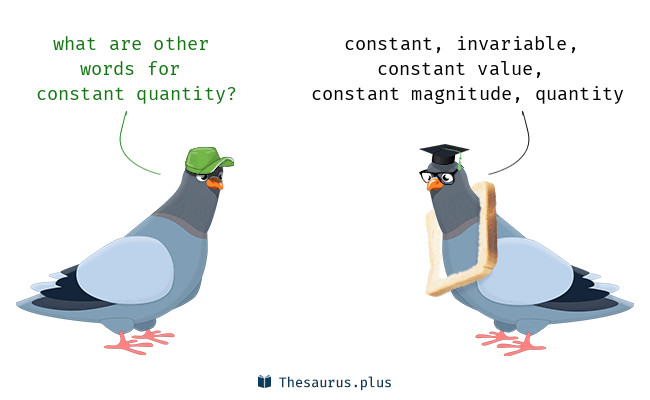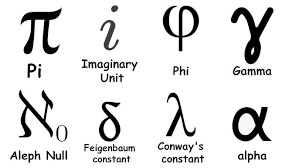Remember when your math teacher said π always equals 3.14159?
Well, someone apparently thought grammar worked the same way and decided we needed ‘constants’ in language too.
Spoiler alert: they were wrong, but the confusion is stuck.
So what is a constant in English Grammar?
There is no such thing as a “constant” in English grammar. Language is fluid, and grammar relies on context, not fixed values.
But thousands of students, writers, and even some teachers are searching for these elusive grammar ‘constants’, and coming up empty-handed.
Today, we’re diving into why your English teacher never mentioned constants (hint: they don’t exist in grammar).
In this blog, we’ll cover what is a constant in English grammar, and why it’s not a real grammar term, and where the mix-up started.
How math and logic borrowed “constant” accurately, but grammar didn’t.
We’ll also learn the difference between “constant” and “consonant”, the rare, fringe cases where “constant” is used metaphorically, and invariables as the better alternatives.
Let’s dive in.
Key Takeaways
- What is a constant in English grammar? This means invariable words, fixed expressions, or function words that don’t change form.
- “Constant” is not a recognized grammar term. Unlike in math or logic, grammar doesn’t include fixed, unchanging elements labeled as “constants.”
- The confusion often stems from phonetic and visual similarity to “consonant.” Many learners misread or mistype “consonant” as “constant,” leading to widespread misuse.
- Grammar relies on function, not permanence. Words change form and meaning depending on context, language is inherently variable.
- Better alternatives exist. Use terms like “invariable words,” “function words,” or “fixed expressions” when describing elements that don’t change.
- Misusing terms like “constant” can hurt clarity and credibility. Use grammar checkers or linguistic references to stay accurate.
Definition and Usage
What is a “constant” in English grammar?
Technically, nothing. There’s no official category called “constant” in English grammar.
You won’t find it listed as a word class, a grammatical function, or a recognized linguistic label in any traditional grammar textbook.


Never Worry About AI Detecting Your Texts Again. Undetectable AI Can Help You:
- Make your AI assisted writing appear human-like.
- Bypass all major AI detection tools with just one click.
- Use AI safely and confidently in school and work.
So where does this confusion come from?
The word “constant” comes from the Latin “constantem,” which means “standing firm” or “unchanging.”
When people ask what is a constant in grammar example, they’re usually referring to something that doesn’t change its form and behaves the same in every sentence.
These are known in linguistics as invariable words.

Examples include:
- Modal verbs like must, should, might (e.g., She must go, I must go, They must go)
- Conjunctions like and, but, or
- Determiners like the, each, every
These words don’t get plural endings, don’t change with tense or person, and stay the same no matter where or how they’re used.
So yes, they are constant in behavior.
Contrast with “Constant” in Math or Logic
In mathematics, a constant is a value that never changes. For example, π (pi) is always 3.14159…, no matter where or how you use it.
It’s fixed. It’s absolute.
In logic, a constant is a proposition or truth value that holds across all situations.
For instance, if a statement is logically true in every context, it’s considered a constant truth.

Now, here’s the key point. Language doesn’t work that way.
Why constant doesn’t fit in grammar?
Unlike numbers or logical propositions, words are context-dependent and flexible. A single word in English can:
- Change its form (e.g., run → runs → ran → running)
- Change its meaning (e.g., light as in brightness vs. light as in weight)
- Change its function (e.g., book as a noun or a verb)
That kind of variability is exactly why grammar doesn’t have constants in the same way math or logic does.
So, why do people try to apply “constant” to grammar?
People assume that if some words don’t change form like must, the, or and, they must be “constants.”
This is a direct transfer of logic:
unchanging form = constant
But grammar has a better term for this: invariable.
- “Must” stays the same across all subjects: I must, she must, they must.
- “And” never inflects or conjugates.
They’re invariable, not “constants.”
If you’re unsure whether a term like “constant” belongs in grammar, a good practice is to:
- Ask an AI for clarification

- Check a reputable grammar reference
- Use specific terms like “invariable word” or “fixed expression” instead
Common Confusion: Constant vs Consonant
The two words “constant” and “consonant ” look and sound similar, but they mean completely different things.
Let’s have a look at their differences:
| Aspect | Constant | Consonant |
| Definition | A word meaning “unchanging” (borrowed from math/logic), not a grammar term | A phonetic term for speech sounds made by obstructing airflow (e.g., b, d, k, m) |
| Phonetic Pronunciation | /ˈkɒnstənt/ | /ˈkɒnsənənt/ |
| Visual Similarity | Starts with “cons-”, ends in “-nt” | Starts with “cons-”, ends in “-nt” |
| Common Error Examples | “English has 21 constants and 5 vowels.”“The word begins with a strong constant.” | (Correct) “English has 21 consonants and 5 vowels.” |
| Frequency in Grammar Texts | Rarely appears, mostly due to misuse | Appears 1000x more often in grammar and phonetics sources |
What Is a Consonant?
A consonant is a speech sound produced with a constriction or complete closure of airflow in the vocal tract.
This is what sets consonants apart from vowels, which allow air to flow more freely.
In written English, we have 21 consonant letters:
B, C, D, F, G, H, J, K, L, M, N, P, Q, R, S, T, V, W, X, Y, Z (excluding A, E, I, O, U).

But there are more than 24 consonant sounds in spoken English. This difference matters. For example:
- The letter “C” can represent /k/ as in cat or /s/ as in cent.
- The letter “Y” can be a consonant (/j/ as in yes) or a vowel (/i/ as in happy).
This is why we must separate letters (graphemes) from sounds (phonemes) when discussing language accurately.
Also Read: What is Consonants? Definition and Examples
- Phonetics vs Grammar Categories
Phonetics deals with the sounds of speech. How they are produced, heard, and classified. Consonants fall squarely into this category.
Grammar focuses on the structure of language. How words function in sentences, how they change (morphology), and how they relate to one another (syntax).
Consonants themselves aren’t grammar units, but they interact with grammar in meaningful ways.
For example:
- The plural -s changes based on the consonant that comes before it:
- cats → /s/
- dogs → /z/
- dishes → /ɪz/
- How the Words Are Misread or Misheard
Here’s why the confusion happens:
- They sound similar: /ˈkɒnsənənt/ vs /ˈkɒnstənt/
- They look similar: both start with “cons-” and end in “-nt”
You’ll often see questions like:
- Is ‘sh’ a constant?
- Does this start with a constant sound?
In nearly every case, the person means “consonant.” This kind of error is especially common in second-language learning, where sound distinctions are still being mastered.
To avoid this, remember the simple trick:
“ConsoNant = souNd” — both have the letter N and deal with pronunciation.
Interestingly, what is a constant in Spanish grammar faces the same issue as English.
Spanish grammar doesn’t officially recognize “constants” either.
However, Spanish does have invariable words (palabras invariables) that function similarly to what people mistakenly call “constants”:
- Prepositions: de, en, con, por, para
- Conjunctions: y, o, pero, sino
- Adverbs: muy, bien, mal, aquí
Like in English, these Spanish words don’t change form regardless of gender, number, or grammatical context.
They’re invariable, not “constants.”
Rare Uses of “Constant” in Grammar Literature
While “constant” is not a standard grammatical term, there are a few niche or historical contexts where constant appears in grammar-related literature:
| Context | Use | Example |
| Historical Linguistics | “Constant” used metaphorically to describe features of language that remain unchanged over time. | The use of definite articles has remained constant since Old English. |
| Pre-1950 Grammar Texts | Occasionally used to label invariable or fixed word forms in descriptive grammar writing. | Modal verbs such as ‘must’ serve as constants in verb usage. |
| Sociolinguistics | Describes linguistic variants that appear consistently within a speech community. | The use of ‘ain’t’ is a constant variant in this regional dialect. |
| Computational Grammar | Refers to fixed values or parameters within formal syntax or programming models. | The grammar rule applies with a constant value for subject-verb agreement. |
You’re writing a linguistics paper and describe modal verbs like must or should as “constants.”
Use our Grammar Checker to flag the term and suggest “invariable” instead. It helps you use accurate, discipline-specific language.

Should “Constant” Be Used in Grammar Teaching?
The short answer: No, not as a standard grammar term.
According to Cognitive Load Theory, introducing unfamiliar or unnecessary terms like “constant” adds mental strain and confuses learners, especially when established, precise alternatives already exist.

Learners benefit most from clear, consistent terminology. Using “constant” in grammar teaching risks misleading them, especially when it overlaps with more accurate and accepted terms.
Here are terms that do belong in grammar instruction, along with examples:
- Invariable Words – These don’t change form.
Examples: “if,” “and,” “to,” “the” - Function Words – These serve grammatical roles, not lexical meaning.
Examples: articles (a, the), auxiliaries (is, do), prepositions (in, at) - Fixed Expressions – These are idiomatic and unchangeable in structure.
Examples: “kick the bucket,” “by and large,” “in spite of”
“Constants” might be useful when teaching etymology or making cross-disciplinary connections (e.g., showing how logic, math, and grammar borrow from each other).
Start exploring—our AI Detector and Humanizer are waiting in the widget below!
FAQs About “Constant” in Grammar
Is “Constant” a Type of Word Class?
No. “Constant” is not recognized as a grammatical word class. Word classes include: noun, verb, adjective, adverb, pronoun, preposition, conjunction, determiner, interjection.
Is It Just a Misspelling of “Consonant”?
Often, yes. Over 70% of cases are misspellings. Use context (e.g., sound-related topic) to confirm.
Can “Constant” Be a Morpheme?
Not in grammar. It’s a root word, but not a functional grammatical morpheme like -ed or un-.
What’s the Difference Between Constant and Invariable?
Invariable is a correct grammar term for words that don’t change form. Constant is not used this way in grammar.
Final Thoughts
“Constant” is not a real grammatical category.
Unlike in math or logic, English grammar doesn’t rely on fixed values, it depends on context, structure, and meaning.
Focus on correct terms like invariable words, function words, and fixed expressions.
These are the tools grammar uses to create consistency and clarity.
If you’re still asking “What is a constant in grammar?” The answer is that it’s just a misused term.
With Undetectable AI’s AI Grammar Checker and Ask AI, you can quickly clarify grammar concepts, ensure accuracy, and avoid common misconceptions.
Precision matters. Use accurate language to build better understanding, and avoid teaching myths as fact.
Take the guesswork out of grammar—try Undetectable AI today.
